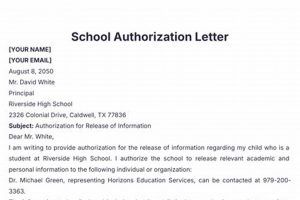Securing roles of influence within a high school environment involves a multifaceted approach encompassing academic excellence, demonstrable commitment to extracurricular activities, and the cultivation of essential soft skills. For instance, a student aspiring to become club president might actively participate in club meetings, volunteer for events, and demonstrate initiative by proposing new projects. This proactive engagement showcases dedication and leadership potential.
Developing leadership skills during adolescence provides a crucial foundation for future success. These roles foster responsibility, communication proficiency, problem-solving abilities, and teamwork, qualities highly valued by colleges and employers. Historically, student government and club leadership have served as training grounds for civic engagement and community involvement, empowering young people to effect positive change.
This article will explore concrete strategies for attaining such roles, including identifying opportunities, building a strong profile, effective communication techniques, and navigating the election process. It will also address the responsibilities inherent in leadership and the ongoing development of leadership qualities.
Tips for Attaining Leadership Roles
These practical tips offer guidance for students seeking leadership positions within their high school.
Tip 1: Identify Interests and Opportunities: Exploring various clubs, organizations, and teams allows students to discover areas aligning with their passions and talents. This focused approach ensures genuine engagement and increases the likelihood of sustained commitment.
Tip 2: Demonstrate Consistent Involvement: Regular attendance, active participation, and volunteering for additional responsibilities demonstrate dedication and reliability, key qualities of effective leaders.
Tip 3: Cultivate Strong Communication Skills: Clear and effective communication is crucial for conveying ideas, motivating others, and resolving conflicts. Practice public speaking, active listening, and concise writing.
Tip 4: Build Relationships with Peers and Faculty: Establishing positive relationships within the school community builds trust and rapport, essential for garnering support and demonstrating collaborative potential.
Tip 5: Develop Problem-Solving Skills: Leaders are often called upon to address challenges and find solutions. Engaging in critical thinking exercises and seeking opportunities to demonstrate problem-solving abilities can showcase leadership aptitude.
Tip 6: Seek Mentorship and Guidance: Connecting with current or former student leaders, teachers, or counselors can provide valuable insights and advice on navigating the leadership landscape within the school.
Tip 7: Understand the Election Process: Familiarize oneself with the specific procedures and requirements for each leadership position, including nomination deadlines, campaign guidelines, and election protocols.
Tip 8: Prepare a Compelling Platform or Speech: Clearly articulate a vision and goals for the position, highlighting relevant skills and experiences that demonstrate suitability for the role.
By implementing these strategies, students can significantly enhance their prospects of attaining leadership positions and developing valuable skills for future endeavors.
These actionable steps provide a solid foundation for pursuing leadership roles and contributing meaningfully to the school community. The following section will offer further insights into maintaining these positions and maximizing their impact.
1. Academic Excellence
Academic excellence plays a significant role in attaining student leadership positions. Strong academic performance demonstrates a capacity for commitment, discipline, and effective time management qualities highly valued in leaders. Furthermore, academic success often correlates with a deeper understanding of complex issues, enhancing a student’s ability to contribute meaningfully to discussions and decision-making processes within leadership roles. For example, a student with a strong understanding of economics might be well-suited to lead a school’s investment club or contribute to the student government’s budget committee. This correlation between academic knowledge and leadership potential strengthens a candidacy for leadership roles.
Beyond specific knowledge, strong academic performance often reflects a broader set of skills essential for effective leadership. These include critical thinking, problem-solving, and analytical skills. These skills are transferable and applicable across various leadership contexts, from managing a team project to organizing a school-wide event. For instance, a student who excels in debate demonstrates critical thinking and persuasive communication skills, valuable assets for any leadership position. Furthermore, academic excellence builds confidence, empowering students to take initiative and voice their perspectives, essential traits for effective leadership.
While academic excellence is a significant factor, it is not the sole determinant of leadership potential. It serves as a strong foundation, complementing other essential qualities like communication skills, interpersonal skills, and a genuine commitment to serving the school community. However, demonstrating a commitment to academic pursuits signals a capacity for responsibility and dedication, strengthening a student’s profile as a potential leader. Ultimately, a well-rounded approach encompassing both academic achievement and active engagement within the school community maximizes the likelihood of attaining and excelling in leadership positions.
2. Extracurricular Involvement
Extracurricular involvement provides a crucial platform for developing and demonstrating leadership skills within the high school environment. Participation in clubs, sports, arts programs, or volunteer organizations offers practical experience in teamwork, communication, problem-solving, and project managementqualities highly sought after in student leaders. For example, captaining a debate team cultivates strategic thinking, public speaking, and the ability to motivate and guide others, all transferable skills valuable in various leadership roles.
Furthermore, active involvement in extracurricular activities demonstrates commitment, initiative, and a willingness to contribute to the school community. Serving as a club treasurer, organizing a school fundraiser, or leading a community service project provides tangible evidence of leadership potential. These experiences offer opportunities to manage resources, coordinate events, and work collaboratively towards common goals, showcasing organizational skills and a capacity for responsibility. Moreover, participation in diverse extracurricular activities broadens perspectives, fosters empathy, and enhances interpersonal skills, all essential attributes for effective leadership.
Ultimately, strategic engagement in extracurricular activities strengthens a student’s leadership profile. Consistent participation, coupled with demonstrated initiative and responsibility within these activities, significantly enhances the likelihood of attaining formal leadership positions within the school. Building a track record of active involvement and contribution provides concrete examples of leadership qualities in action, offering compelling evidence of a student’s capacity to guide, motivate, and inspire others. This practical experience, combined with the development of essential soft skills, positions students favorably for leadership roles within the school and beyond.
3. Effective Communication
Effective communication serves as a cornerstone of successful leadership within a high school setting. The ability to articulate ideas clearly, actively listen to diverse perspectives, and foster open dialogue is essential for building consensus, motivating teams, and navigating complex situations. These communication skills are crucial not only for attaining leadership positions but also for effectively fulfilling the responsibilities inherent in such roles.
- Clear and Articulate Expression:
Leaders must convey their vision, goals, and instructions with clarity and precision. This includes using concise language, appropriate vocabulary, and a confident delivery. For instance, a student body president effectively communicating a fundraising plan to the student body can generate greater support and participation. Clear articulation fosters understanding and minimizes ambiguity, ensuring everyone is working towards a shared objective. This skill is particularly important when presenting proposals, leading meetings, or addressing a large group.
- Active Listening and Empathy:
Effective leaders prioritize understanding the perspectives of others. Active listening involves paying close attention to both verbal and nonverbal cues, asking clarifying questions, and demonstrating genuine interest in different viewpoints. For example, a club president actively listening to members’ concerns can address issues effectively and build a more inclusive environment. Empathy allows leaders to connect with their peers on a deeper level, fostering trust and collaboration.
- Constructive Feedback and Conflict Resolution:
Providing constructive feedback and navigating disagreements effectively are critical leadership skills. Leaders should be able to offer specific and actionable suggestions for improvement while maintaining a supportive and encouraging tone. Similarly, mediating conflicts requires impartiality, active listening, and the ability to find mutually agreeable solutions. For example, a team captain mediating a dispute between team members can strengthen team cohesion and maintain a positive team dynamic. These skills contribute to a more positive and productive environment.
- Adapting Communication Styles:
Effective communicators adapt their style based on the audience and context. Understanding when to use formal versus informal language, written versus verbal communication, and individual versus group interactions demonstrates communication versatility. A student leader, for instance, might use formal language when addressing the school administration but adopt a more informal tone when interacting with peers. This adaptability ensures messages are received effectively and fosters stronger relationships.
These facets of effective communication are integral to successful leadership in high school. Students who cultivate these skills not only increase their chances of attaining leadership roles but also enhance their ability to inspire, motivate, and effectively guide their peers. These communication skills form the foundation for building strong relationships, achieving shared goals, and creating a positive impact within the school community. Moreover, these skills are transferable and beneficial beyond the high school environment, serving as valuable assets in future academic, professional, and personal endeavors.
4. Demonstrated Responsibility
Demonstrated responsibility serves as a critical factor in attaining leadership positions within a high school environment. Students who consistently exhibit responsible behavior signal their capacity for accountability, dependability, and commitmentqualities highly valued in leaders. This demonstration involves actively seeking opportunities to contribute, fulfilling commitments reliably, and taking ownership of both successes and failures. For instance, a student consistently completing assigned tasks within a club, volunteering for additional responsibilities, and demonstrating a proactive approach to problem-solving exemplifies responsible behavior that resonates positively with peers and faculty alike.
The connection between demonstrated responsibility and leadership potential lies in the trust it cultivates. When students consistently demonstrate responsibility, they build trust with their peers and teachers. This trust forms the foundation upon which leadership opportunities are often offered. A student known for their reliability and dedication is more likely to be entrusted with leadership roles, as they have proven their ability to handle responsibilities effectively. For example, a student consistently arriving on time and prepared for rehearsals might be considered a strong candidate for a leadership role within the drama club, as their consistent responsible behavior indicates a commitment to the group’s success. This principle extends beyond extracurricular activities to academic performance, classroom behavior, and community involvement, where consistent responsibility reinforces a student’s leadership potential.
In essence, demonstrated responsibility serves as tangible evidence of leadership capacity. It provides concrete examples of a student’s ability to manage tasks, contribute meaningfully, and uphold commitments. This track record of responsible behavior strengthens a student’s profile, positioning them favorably for leadership roles. By consistently demonstrating responsibility in various contexts, students cultivate the trust and respect necessary to lead effectively within the high school community and beyond. Cultivating this quality is not merely a strategy for attaining leadership positions but an essential element of personal growth and development, contributing to future success in all endeavors.
5. Interpersonal Skills
Interpersonal skills play a crucial role in attaining leadership positions within a high school environment. These skills, encompassing communication, empathy, collaboration, and conflict resolution, are essential for building rapport, fostering teamwork, and navigating the complexities of social dynamics inherent in leadership roles. Strong interpersonal skills enable students to connect with peers and faculty on a deeper level, creating a foundation of trust and mutual respect that is essential for effective leadership. For example, a student demonstrating empathy and understanding towards classmates struggling with a project can build stronger relationships and foster a more supportive team environment, increasing their influence and potential for leadership.
The practical significance of strong interpersonal skills in leadership becomes evident in various scenarios within the high school context. When leading a team project, a student with well-developed interpersonal skills can effectively delegate tasks, motivate team members, and mediate disagreements, ensuring project completion and a positive team experience. Similarly, in student government, the ability to build consensus, negotiate compromises, and communicate effectively with diverse groups of students and faculty members is crucial for achieving shared goals and representing the student body effectively. Moreover, these skills extend beyond formal leadership positions, influencing peer interactions, classroom dynamics, and relationships with teachers, contributing to a more positive and productive learning environment.
Cultivating strong interpersonal skills enhances not only the likelihood of attaining leadership positions but also the effectiveness of leadership once attained. These skills contribute to building strong teams, fostering positive relationships, and navigating the challenges that inevitably arise in leadership roles. The ability to communicate effectively, empathize with others, and resolve conflicts constructively are invaluable assets for student leaders, contributing to their success and the positive impact they have within the school community. Investing in the development of these skills provides a foundation for effective leadership in high school and beyond, preparing students for future academic, professional, and personal endeavors where strong interpersonal skills are essential for success.
6. Genuine Commitment
Genuine commitment stands as a cornerstone of effective leadership within the high school environment. It signifies a dedication that extends beyond superficial involvement, reflecting a deep-seated passion for serving others and contributing meaningfully to the school community. This genuine commitment resonates with peers and faculty, fostering trust and inspiring others to follow. This section will explore key facets of genuine commitment and their connection to attaining leadership positions.
- Sustained Involvement:
Genuine commitment manifests as sustained involvement in chosen activities. It’s not about joining numerous clubs or teams but about dedicating oneself to a select few and consistently contributing over time. For example, a student consistently attending and actively participating in student council meetings, even during busy periods, demonstrates a genuine commitment to serving the student body. This sustained involvement builds expertise, strengthens relationships, and demonstrates reliability, essential qualities for leadership.
- Initiative and Proactiveness:
Genuine commitment goes beyond fulfilling assigned tasks; it involves actively seeking opportunities to contribute and improve. Students demonstrating initiative by proposing new projects, volunteering for additional responsibilities, or identifying areas for improvement within a club or organization exemplify genuine commitment. For example, a member of the environmental club initiating a school-wide recycling program demonstrates a proactive approach to addressing an important issue, highlighting leadership potential. This willingness to go above and beyond signals a genuine desire to make a positive impact.
- Perseverance Through Challenges:
Genuine commitment remains steadfast even in the face of challenges. Setbacks and obstacles are inevitable in any endeavor, but students who persevere through difficulties, demonstrating resilience and a continued dedication to their goals, exemplify genuine commitment. For example, a student government representative continuing to advocate for a student initiative despite initial resistance from the administration demonstrates perseverance and a genuine commitment to representing the student body. This resilience builds credibility and inspires confidence in leadership abilities.
- Passion and Enthusiasm:
Genuine commitment is often fueled by passion and enthusiasm. When students genuinely care about the activities they participate in, their passion becomes contagious, inspiring others and creating a more positive and productive environment. For example, a student excitedly sharing their passion for robotics with other club members can inspire greater engagement and collaboration within the club. This enthusiasm can motivate others to contribute more effectively and strengthen the overall sense of community within the group.
These facets of genuine commitment contribute significantly to a student’s leadership potential within the high school context. Demonstrating sustained involvement, initiative, perseverance, and passion not only strengthens a student’s candidacy for leadership roles but also enhances their effectiveness as leaders once attained. These qualities inspire trust, motivate others, and contribute to a more positive and impactful leadership experience. Cultivating genuine commitment is essential for maximizing the benefits of leadership opportunities and making a meaningful contribution to the school community.
Frequently Asked Questions
This section addresses common inquiries regarding attaining leadership roles within the high school environment.
Question 1: What if no formal leadership positions are available within areas of interest?
Leadership opportunities extend beyond formal titles. Students can demonstrate leadership by taking initiative within existing groups, proposing new projects, or mentoring younger students. These informal leadership roles can be equally valuable in developing leadership skills and demonstrating potential.
Question 2: How can one overcome a fear of public speaking when campaigning for a leadership position?
Practice and preparation are key to managing public speaking anxiety. Rehearsing speeches, focusing on deep breathing techniques, and visualizing success can significantly reduce anxiety. Joining the debate club or participating in public speaking workshops can provide valuable experience and build confidence.
Question 3: Is prior leadership experience necessary to secure a leadership role in high school?
Prior experience can be beneficial but is not always a requirement. Demonstrating leadership qualities through active involvement, initiative, and a commitment to serving the school community can be equally compelling. Highlighting transferable skills from other areas, such as teamwork from sports or organizational skills from part-time jobs, can showcase leadership potential.
Question 4: How does one balance academic commitments with the demands of a leadership role?
Effective time management is essential. Prioritizing tasks, creating schedules, and utilizing organizational tools can help students balance academic responsibilities with the demands of leadership roles. Seeking support from teachers, counselors, or mentors can also provide valuable guidance.
Question 5: What if a student doesn’t win a desired leadership position?
Not attaining a desired position presents an opportunity for growth and reflection. Analyzing the outcome, seeking feedback from peers and faculty, and identifying areas for improvement can strengthen future campaigns. Continuing to demonstrate leadership qualities through other avenues can further develop skills and demonstrate persistent commitment.
Question 6: How can students continue developing leadership skills beyond high school?
Leadership development is an ongoing process. Seeking leadership opportunities in college, joining community organizations, and pursuing professional development programs can further cultivate leadership skills. Continuously reflecting on experiences, seeking feedback, and adapting approaches contribute to ongoing growth and development as a leader.
Understanding these common concerns provides a more comprehensive perspective on navigating the path toward leadership roles within the high school setting.
This concludes the comprehensive guide on attaining leadership positions within high school. By implementing these strategies and consistently demonstrating leadership qualities, students can significantly enhance their prospects of achieving leadership roles and making a meaningful contribution to their school community.
Conclusion
Attaining leadership positions in high school necessitates a multifaceted approach. Academic dedication, active extracurricular involvement, effective communication, demonstrable responsibility, strong interpersonal skills, and genuine commitment are crucial components of a successful strategy. Cultivating these qualities not only increases the likelihood of securing leadership roles but also builds a foundation for effective leadership practice. Understanding the nuances of the election process, preparing compelling platforms, and seeking mentorship further enhance prospects.
Leadership development within the high school environment provides invaluable experience and skills applicable far beyond the confines of secondary education. The pursuit of leadership roles fosters personal growth, empowers individuals to contribute meaningfully to their communities, and cultivates essential qualities that benefit future academic, professional, and personal endeavors. Active engagement in this pursuit equips students with the skills and experiences necessary to become effective leaders in the future.







